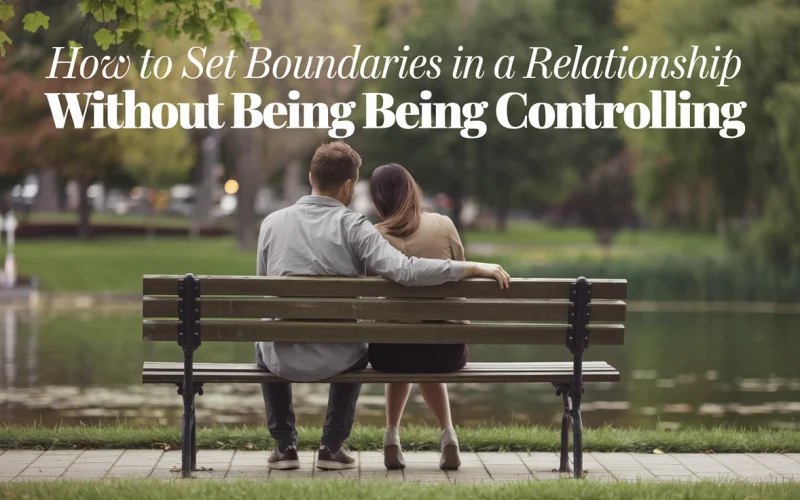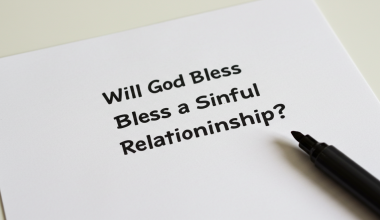Picture this: you’re in a relationship, and things are going great—until your partner accidentally eats the last slice of pizza you were saving.
Suddenly, you realize you need a boundary: “Thou shalt not touch my leftover pizza.” Setting boundaries like this is essential, but if not handled correctly, they can come across as controlling.
Healthy boundaries are like the lines on a soccer field—they define the game but don’t prevent anyone from scoring.
Without boundaries, relationships can become messy and frustrating. With them, you create a space for love, respect, and trust to thrive. Here’s how to set boundaries in a relationship without channeling your inner control freak.
1. Know Thyself: The Boundary Blueprint
Before you can set boundaries, you need to figure out what your boundaries are. It’s like building a fence—you can’t just hammer random planks into the ground and hope for the best.
Ask Yourself: What Do I Need?
Start by reflecting on what makes you feel safe, valued, and respected in a relationship. Do you need alone time to recharge? Clear communication about finances? A “no spoilers” policy for TV shows?
Be Honest with Yourself
There’s no shame in having needs. Everyone does! Understanding your own boundaries helps you communicate them effectively and makes the process feel less like a power play and more like teamwork.
Pro Tip: Make a list. If it feels too formal, imagine you’re writing a quirky “User Manual for Me” guide instead.
2. Communication is Key (and Kind of Fun, Too)
The cornerstone of setting boundaries is communication. But here’s the catch: how you say something is just as important as what you say.
Use “I” Statements
Nobody likes to feel attacked. Instead of saying, “You’re always on your phone when we’re together,” try, “I feel disconnected when we don’t spend quality time together.” This simple tweak shifts the focus from blaming to expressing your feelings.
The Timing Game
Don’t try to talk about boundaries in the middle of an argument or while your partner is binge-watching their favorite show. Choose a calm, neutral time when both of you can focus.
Practice Active Listening
Setting boundaries isn’t a monologue; it’s a conversation. Listen to your partner’s thoughts and feelings, and be open to compromise. Relationships are a two-way street, not a dictatorship.
3. Respect, Trust, and Autonomy: The Holy Trinity of Boundaries
Boundaries are about fostering respect, trust, and autonomy—not about micromanaging your partner. Think of them as relationship vitamins: they’re good for both of you and keep the connection healthy.
Respect Each Other’s Independence
It’s okay to have separate hobbies, friends, and interests. Just because your partner loves hiking doesn’t mean you need to strap on boots and join them every weekend (unless you want to).
Trust the Process
Setting boundaries requires trust. If your partner needs space, it doesn’t mean they’re plotting their escape—it means they value their individuality. And if you need space, it’s okay to ask for it without guilt.
Humorous Sidebar: Trust is letting your partner pick a movie without Googling the reviews first.
4. Clarity is King (or Queen)
Imagine playing a board game where the rules keep changing—frustrating, right? That’s how unclear boundaries feel in a relationship. Be specific about what you need and why it matters.
Examples of Clear Boundaries
- Time: “I need an hour of quiet time each evening to unwind.”
- Communication: “If we have a disagreement, I’d like us to talk it out rather than giving each other the silent treatment.”
- Space: “I’m happy to hang out with your friends, but I also need some time just for us.”
When you’re clear, your partner doesn’t have to guess what you want, and you’re less likely to feel resentful.
5. Be Flexible, Not Rigid
Life is unpredictable, and so are relationships. While it’s important to stick to your boundaries, it’s equally important to be adaptable.
Negotiate, Don’t Dictate
Let’s say you love staying in on Friday nights, but your partner wants to go out. Instead of putting your foot down, look for a compromise: maybe you stay in one Friday and go out the next.
Revisit Boundaries as Needed
As your relationship evolves, so will your boundaries. It’s okay to have a “boundary check-in” every now and then to see what’s working and what needs tweaking.
6. Address Boundary Crossings Calmly
Even with the best intentions, boundaries will sometimes be crossed. When that happens, how you respond matters.
Don’t Explode
Instead of yelling, calmly remind your partner of the boundary and explain why it’s important to you. For example, “Remember when we agreed not to check our phones during dinner? I feel more connected when we’re both fully present.”
Forgive and Learn
Mistakes happen. What’s important is how you both move forward. Use boundary crossings as opportunities to strengthen your understanding of each other.
7. Keep It Fun and Light-Hearted
Who says setting boundaries has to be a serious affair? Adding humor can make the process less intimidating and more relatable.
Examples of Light-Hearted Boundary Talk
- “You can have the remote on weekdays, but Sundays are for my true love: football.”
- “Feel free to borrow my hoodie—but it must be returned within 72 hours. Penalties apply!”
Humor not only breaks the ice but also shows that you’re setting boundaries to build a healthier relationship, not to create a rulebook.
8. Boundaries for Modern Relationships
In today’s tech-driven world, setting boundaries around technology is more important than ever.
Digital Detox
If constant notifications are interfering with your quality time, agree on phone-free zones or hours. For example, “Let’s put our phones away during dinner so we can catch up without distractions.”
Social Media Sanity
Discuss what you’re comfortable sharing online. Maybe you’re okay with couple selfies but prefer to keep personal disagreements private.
9. When in Doubt, Seek Help
If setting boundaries feels overwhelming, consider seeking support from a therapist or counselor. They can provide tools and strategies tailored to your relationship.
Couples Counseling
Sometimes, an impartial third party can help navigate tricky conversations and ensure both partners feel heard.
Self-Help Resources
Books, podcasts, and workshops on relationships can also provide valuable insights.
Final Thought: Boundaries Are the Foundation, Not a Fence
At the end of the day, setting boundaries is about creating a loving, respectful, and supportive environment where both partners can thrive. It’s not about control—it’s about care.
Remember, boundaries aren’t walls; they’re bridges that connect you while honoring your individuality. So go ahead, set those boundaries—with a dash of humor, a sprinkle of clarity, and a whole lot of love.
And hey, next time your partner eyes that last slice of pizza, you’ll know exactly what to say. 😊






